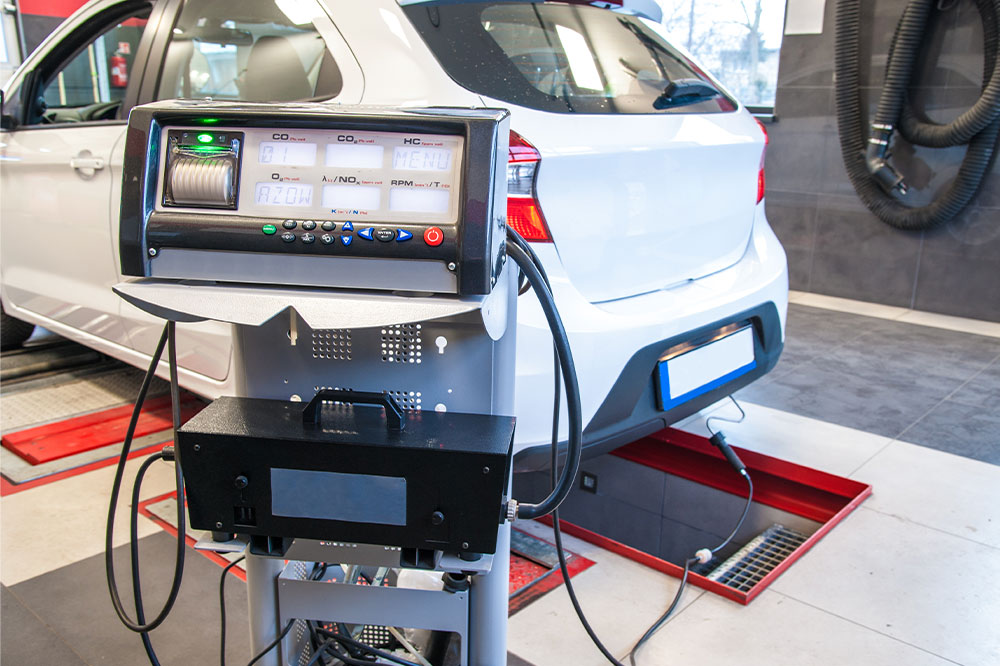Everything to Know About Emissions Testing
Emissions testing is an essential evaluation for vehicle maintenance as it helps owners understand if any repairs or fuel issues need to be sorted out. Luckily, finding an affordable emissions center is easier than ever today. All one needs is a quick online search for “schedule emissions test near me” or “emissions testing near me” before locating nearby facilities and setting an appointment for a quick testing session. Here are some details regarding emissions testing:
Why are emissions testing important?
There are several reasons why emissions testing is a necessity for vehicle owners. Some of the reasons include the following:

It indirectly boosts the vehicle’s performance
As implied earlier, emissions testing has a lot to do with vehicle maintenance. Such evaluations help vehicle owners discover any underlying problem, such as malfunctioning catalytic converters, exhaust systems, or engines, and address them at the earliest opportunity. Such issues usually affect the performance and fuel efficiency of a vehicle. So, sorting them out can make a vehicle more powerful and sustainable from an environmental perspective.
It helps protect the environment
Speaking of environmental sustainability, emissions testing enables vehicle owners and testers to know the number of toxic greenhouse gases a vehicle emits. These emissions can seriously affect the air quality and ozone content in the atmosphere.
By evaluating a vehicle’s emissions and similar other parameters, manufacturers can also improve their existing models to make them less likely to pollute the environment. Until electric vehicles become the norm, if they do, i.e., emissions testing and addressing problems are the safest bets to keep climate change under control.
It helps the owner comply with state regulations
To combat the concerning issue of climate change, all countries around the world have created emissions norms and standards for vehicle manufacturers and owners to meet. If such entities are unable to meet these standards, then they will have to pay penalties and face other kinds of consequences, like jail terms, as well. An emissions test enables vehicle owners and manufacturers to know where their vehicles stand when it comes to pollutant and particulate emissions, carbon footprint, and greenhouse gas production. With this information, manufacturers can create changes in their production process to make their vehicles more environmentally friendly. Vehicle owners, on the other hand, can take their cars to a service station for repairs if their cars, bikes, or trucks exceed the standard emission limits.
It aids in public health protection
Ultimately, controlling emissions has a long-term healthcare effect on the masses as well. Particulates and other pollutants that emerge from a vehicle’s tailpipe can cause issues such as bronchitis, asthma, COPD, and, in the worst cases, even lung cancer and cardiovascular issues. Testing a vehicle’s emissions regularly helps keep such risks at bay as it lets people know how well or badly their machines are performing in this regard.
How does emissions testing work?
Emissions testing is fairly inexpensive and can be done on a regular basis. Normally, a test would cost vehicle owners anywhere between $10 to $30. This cost depends on the state in which the testing is carried out.
Firstly, the vehicle’s identification number (VIN) is checked and recorded for a quick visual inspection. Then, a gauging machine named the dynamometer is used to measure the emissions of a vehicle to a pipe connected to the vehicle’s exhaust pipe.
The vehicle is allowed to run at different speeds, and the emission details are recorded. This is done to carry out the smog test, during which the chemicals and particulates emitted by a vehicle are studied closely. If the vehicle is emitting more particles than the standard number or percentage, then the machine will not rate it as “passed.” In this phase, owners also get to know the exact cause of the increased emissions. The technician carrying out the test inspects a vehicle’s exhaust system, catalytic converter, muffler, and other under-the-hood components to get accurate numbers during the process.
How does a vehicle fail an emissions test?
The following things are checked during an emissions test – the amount of benzene (C6H6), carbon monoxide (CO), hydrocarbons (HC), nitrogen oxides (NOx), carbon dioxide (CO2), particulate matter, and sulfur dioxide emitted by a vehicle. It is not uncommon for vehicles to fail an emissions test. Some of the ways through which a vehicle could fail an emissions test are as follows:
The motor oil is old and contaminated.
The vehicle’s spark plugs are malfunctioning.
The vehicle’s check engine light turns on during a test.
The vehicle’s air/fuel mixture has excessive oil.
The air filter is filthy and dirt-filled.
The vehicle’s gas cap is loosely fit.
Certain states offer a one-time waiver if a vehicle owner spends beyond a certain limit on their vehicle repairs. However, the next time a given vehicle fails the test, the owner will have to bear the full costs without fail, plus additional penalties, if any.
What are the tips and ideas to pass emissions tests?
Here are certain ideas to pass emission tests easily and ethically:
Getting an oil change
A vehicle’s PCV (positive crank ventilation) system leaves fumes near its oil compartment. This contaminates the oil and negatively affects a vehicle’s emissions. To avoid this, one can have an oil change a few hours before a test.
Inflating the tires
When the tires are properly inflated, the car’s engine will not have to overwork while it is on the dynamometer. This reduces the emission levels.
Getting a tune-up
Getting a tune-up just two to three weeks prior to a test helps improve several of its internal components. This can reduce the possibility of failing an emissions test.
Once you’re done with these steps, you can confidently look up “vehicle emissions test locations near me,” and head for the test. While it may not be easy to determine whether an emissions test will be cheap or not, scheduling one at the nearest center can give you an idea of the cost.

